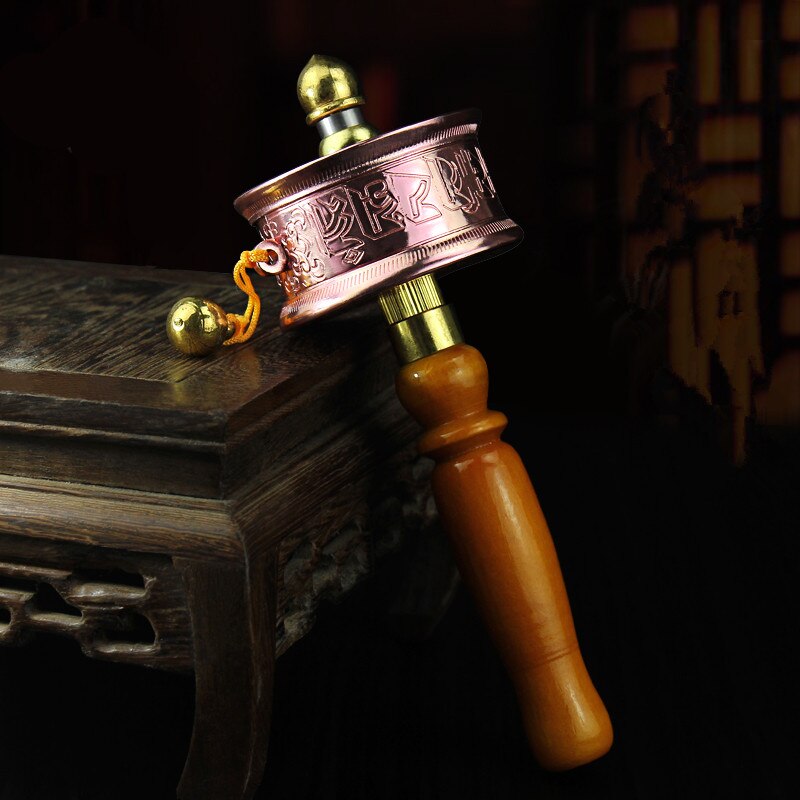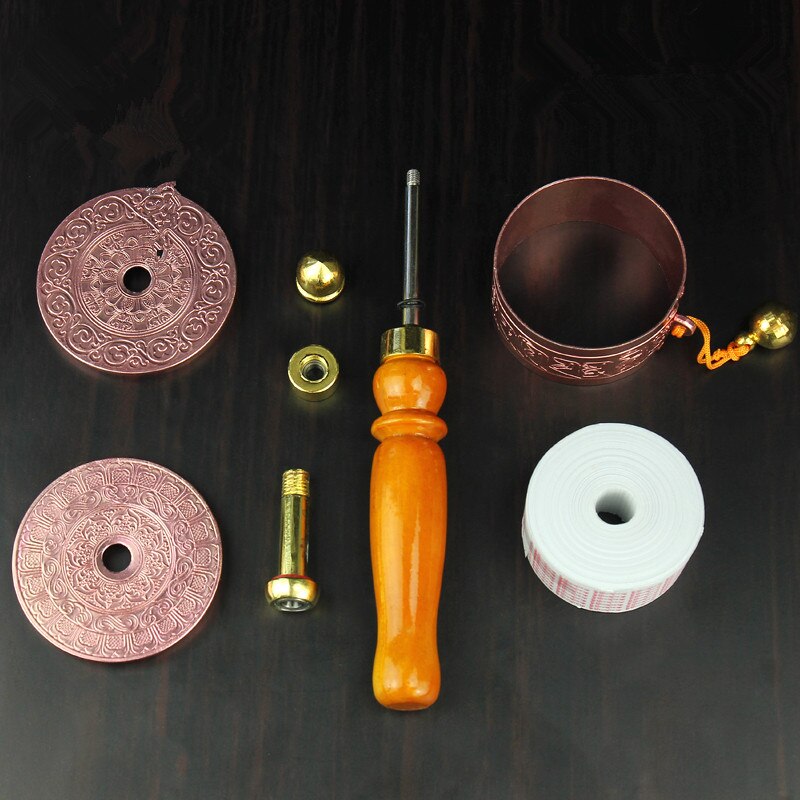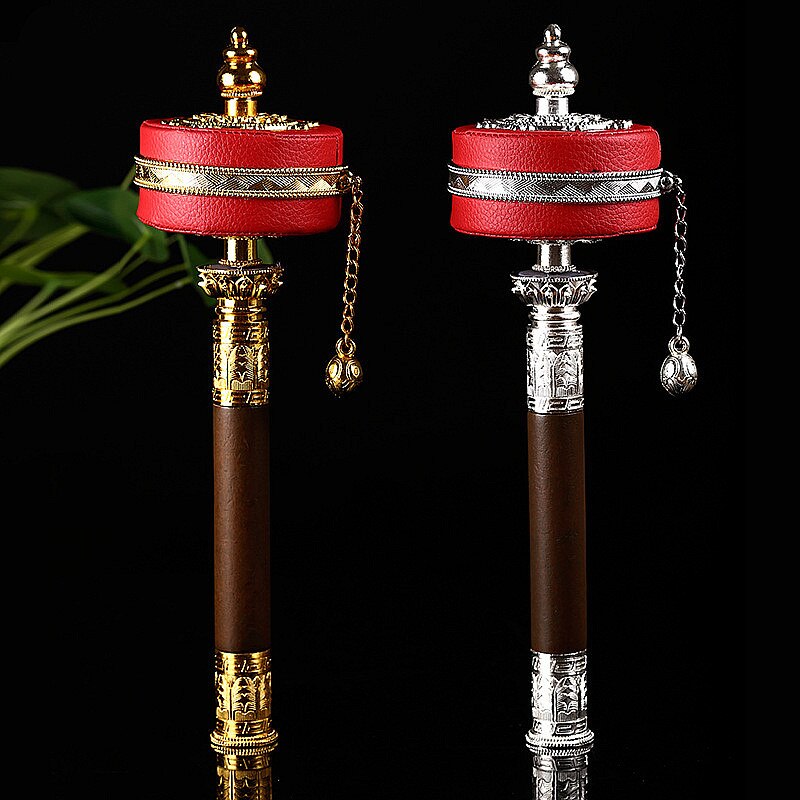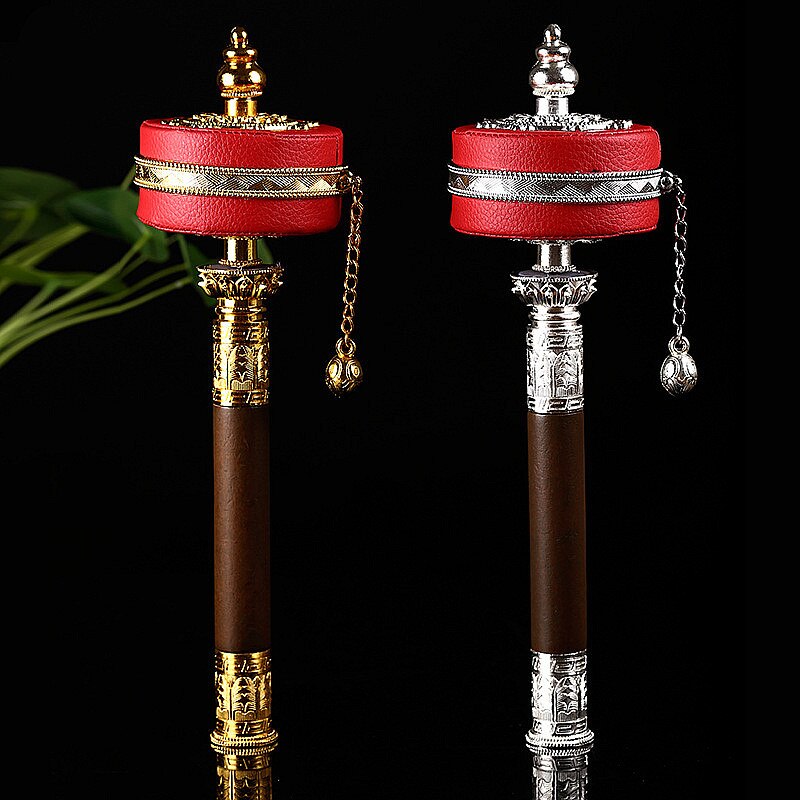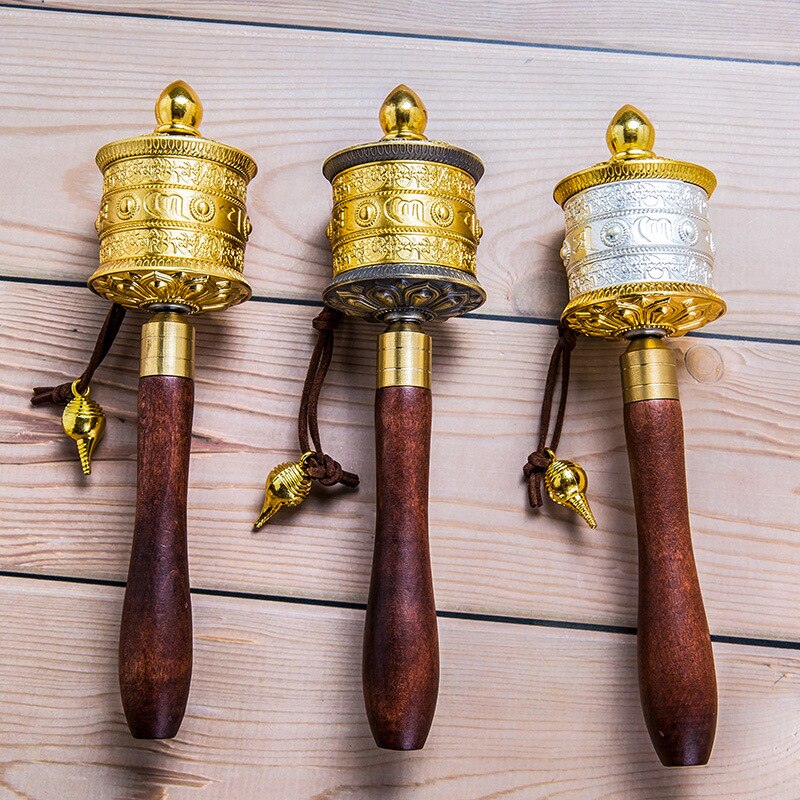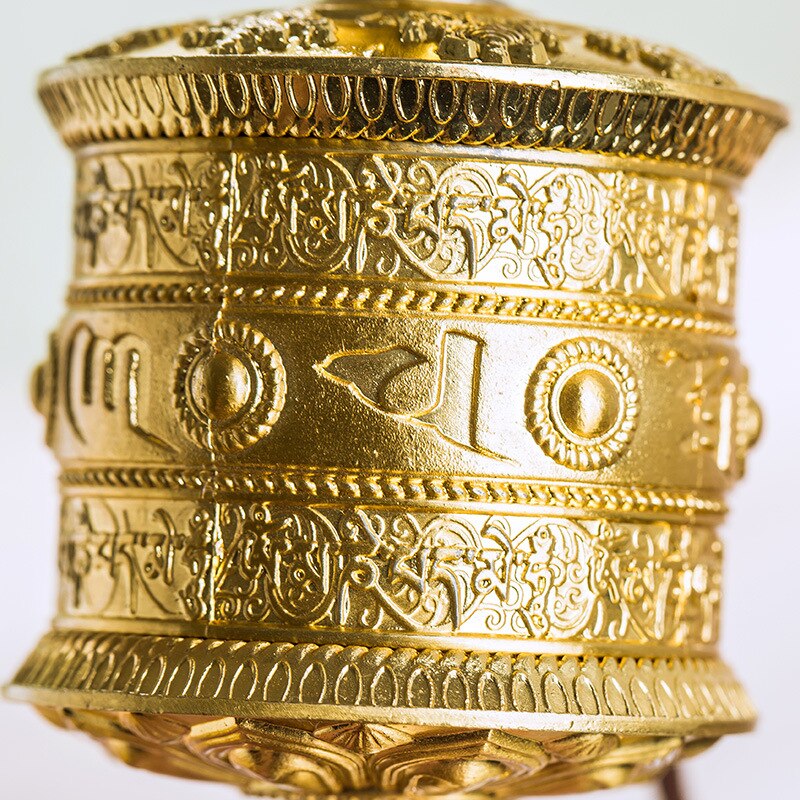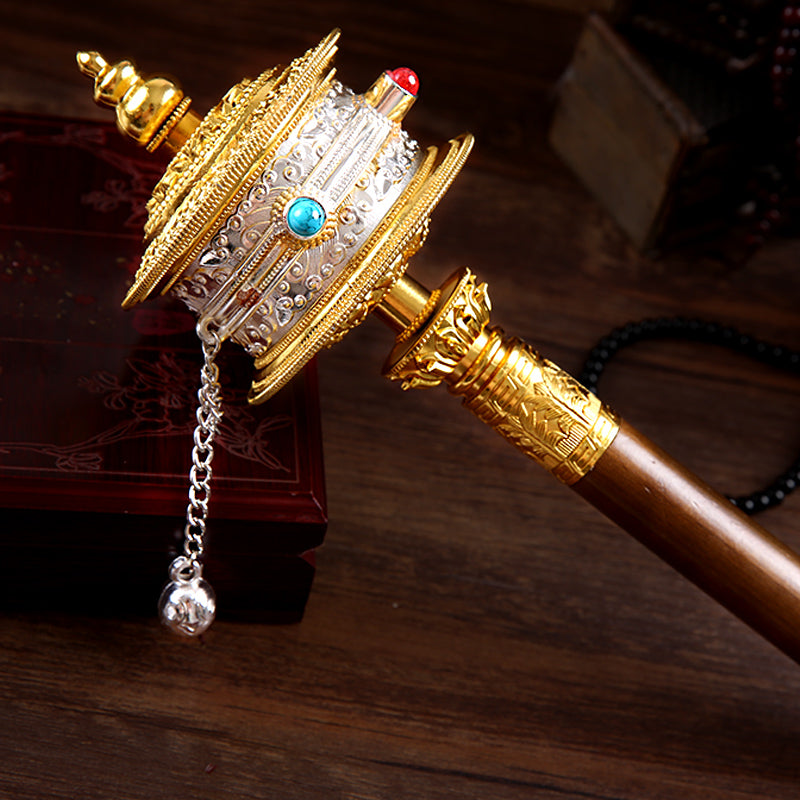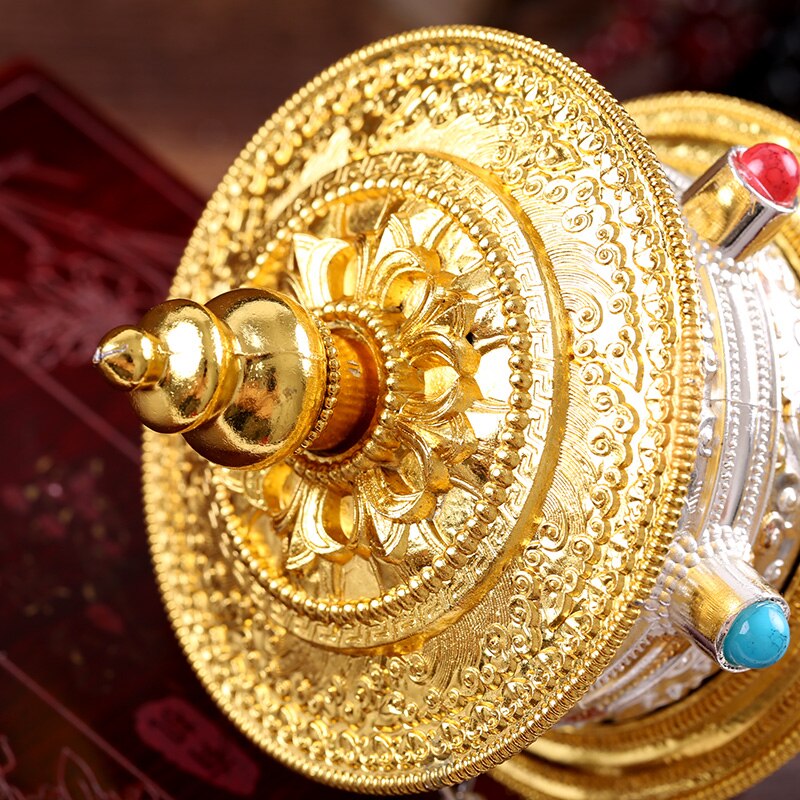Your Cart is Empty
🙏 La livraison est offerte sur tous vos achats ! 🙏
🙏 La livraison est offerte sur tous vos achats ! 🙏
🙏 La livraison est offerte sur tous vos achats ! 🙏
Notre site est chiffré de bout en bout par un protocole SSL et les paiements sont sécurisés via Stripe
Nous offrons la livraison sur tous nos produits partout dans le monde. (Hors DOM-TOM)
Vos commandes sont validées & préparées dans les 24 à 48 heures qui suivent vos achats.
 Livraison Offerte
Livraison Offerte
€104,99 €110,99 You Save 5% (€6,00)
Collections: Prayer wheel
Tibetan prayer wheels are used by multiple Tibetans every day on top of the world, continuously for hours. Buddhists turn prayer wheels to store blessings, to assist all men and to purify their chakra.
According to the Grand Master Dalai Lama, "For the privilege of sentient beings, Buddhas and Bodhisattvas declare themselves inside a Buddhist prayer wheel with copper pendant to totally purify our corrupting chakras and our confusions, and to get us to adapt the concretizations of the path to enlightenment. ”
Rotating a copper pendant Buddhist Prayer Wheel with millions of mantras inside corresponds to revealing those thousands of mantras, but it is done in a fraction of the time. The intensification of favors is similarly collected with the help of prayer wheels driven by wind and water. Thus the wind or water which touches with the prayer wheel will be blessed by the prayer wheel and can therefore sacred all that it touches of the corrupting chakra.
The faithful are constantly seen on their expedition with prayer wheels in hand, or as part of their pilgrimage, they spin a Buddhist prayer wheel with copper pendant in the monasteries and Buddhist centers they visit.
/ p>
With each movement of the Buddhist prayer wheel copper pendant, the Buddha whose mantra is inscribed on it emanates from the wheel in entities as innumerable as the mantras. In this way, if there are a thousand Manjushri mantras coiled in the Copper Pendant Buddhist Prayer Wheel, then a thousand Manjushri exhalations will be performed with each movement of the Copper Pendant Buddhist Prayer Wheel and benefit the rest. of the world.
Nevertheless, it is believed that the favors of spinning the wheel of the Buddhist Prayer Wheel copper pendant with careful thought are a billion times more qualitative than spinning it with an evaporated mind.
A Buddhist prayer wheel with copper pendant is an illustration of the Buddhist technique. This technique allowed Buddhists to increase by large numbers the number of prayers they recited.
Indeed, the Buddhist prayer wheel copper pendant contains examples of precepts like that of Avalokiteshvara the mantra om mani padme hum. The precept is written down as many times as possible, sometimes millions. The sheet is wound around an axis and included in a safety cylinder.
In recent years, the microfilm process has made it possible to evoke millions, even hundreds of thousands of prayers in a single turn of the wheel
The dimensions of prayer wheels vary from the small hand-held wheel to the oversized wheel bolted into the masonry of a building, like a circular pillar.
The wheels are designed to be rotated manually, by a blast, rain or a blaze. When they belong to a monument, the pilgrims spin around the monastery clockwise and spin the wheels while touching them. As a result, they benefit from the advantage of avoiding the sacred monument and benefiting from the mantras transmitted thanks to the Buddhist prayer wheel copper pendant.
Prayer wheels are shaped in a few sizes: they can be small and attached to a stick or pole, and turned by hand; medium in size and attached to buildings or monuments, or gigantic and constantly turned by a water mill. However, the small Buddhist prayer wheel with copper hand pendant are widely used.
Simply touching and twirling a copper pendant Buddhist Prayer Wheel grants extraordinary purification and amasses tremendous merit. It is believed that the more mantras one says, the more merit one gains, which multiplies one's opportunities to benefit from a higher incarnation and finally attain nirvana.
Touching or spinning the Buddhist Copper Pendant Prayer Wheel is described as so powerful that it is compared to that of millions of worshipers praying for decades.
One of the benefits of the Buddhist Copper Pendant Prayer Wheel is that it represents all the actions of Buddhas and Bodhisattvas in the 10 directions. For the benefit of humans, Buddhas and Bodhisattvas show themselves inside the prayer wheel to purify all of our unfavorable chakras and blackenings, and to compel us to actualize the concretizations of the enlightenment path.
We imagine that the prayer using the Buddhist prayer wheel copper pendant grants everything a practitioner demands.
It is strongly believed that twirling the Copper Pendant Buddhist Prayer Wheel with grief and guilt will make it easier for you to refuse the four evil deeds, the five actions of immediate retribution, the eight evil views not to mention the ten non-virtues.
Anyone who spins the Buddhist Copper Pendant Prayer Wheel in their life should never be reincarnated again with deformities during their lifetime, nor with disabilities such as blindness, deafness, dumbness or infirmity.
Prayer wheel: Mani wheel (a hand-held prayer wheel)
Prayer wheel: Water wheels (turned by flowing water)
Prayer wheel: Fire wheel (turned by the heat of a candle or an electric light)
Prayer wheel: Wind wheel (a kind of prayer wheel turns thanks to the wind)
Prayer wheel: Fixed prayer wheels
Prayer wheel: Electric Dharma Wheels (powered by electric motors)
Spinning this copper pendant Buddhist prayer wheel and uttering is renowned as one of the wisest and most beneficent activities. Commonly built on the outskirts of stupas and buildings, large numbers of Buddhist prayer wheels can be counted in the millions for people to spin as they pass by or around temples or stupas in the city. clockwise.
A famous example of many prayer wheels in one place may be the famous Swayambhunath stupa, where many prayer wheels are attached to the surroundings of the enormous Swayambhunath stupa The precept to be recited when rotating the mills to Buddhist prayers is: "OM MANI PADME HUM" or "OM MANI PEME HUNG".




